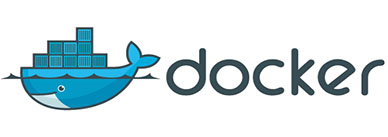How To Install Docker on Linux Mint 22

In this tutorial, we will show you how to install Docker on Linux Mint 22. Docker has revolutionized the way developers and system administrators deploy and manage applications. As a powerful containerization platform, Docker allows you to package applications along with their dependencies into lightweight, portable containers. This approach ensures consistency across different environments and simplifies the deployment process.
This article assumes you have at least basic knowledge of Linux, know how to use the shell, and most importantly, you host your site on your own VPS. The installation is quite simple and assumes you are running in the root account, if not you may need to add ‘sudo‘ to the commands to get root privileges. I will show you the step-by-step installation of the Docker container on Linux Mint 22.
Prerequisites
- A server running one of the following operating systems: Linux Mint 22.
- It’s recommended that you use a fresh OS install to prevent any potential issues.
- While we’ll guide you through the process, a basic understanding of the command line will be beneficial. If you’re new to the CLI, you might want to acquaint yourself with some fundamental commands.
- At least 2 GB of RAM.
- 20 GB of free disk space.
- An active internet connection.
- Administrative privileges are essential for installing and configuring software on your system. Ensure that you have superuser or sudo access.
Install Docker on Linux Mint 22
Step 1. Update Your Linux Mint System.
To begin, it’s crucial to update your system packages to their latest versions. This step ensures that you have access to the most recent security patches and bug fixes. Open the terminal and run the following command:
sudo apt update sudo apt upgrade
This command will refresh the package list and notify you of any available updates. Keeping your system up to date is a good practice to maintain the stability and security of your Linux Mint installation.
Step 2. Installing Required Dependencies.
Before installing Docker, you need to install some dependencies that are required for the installation process. These dependencies include packages that enable secure downloads and package verification. Run the following command to install the necessary dependencies:
sudo apt install apt-transport-https ca-certificates curl gnupg lsb-release
Here’s a brief explanation of each dependency:
apt-transport-https: Enables downloading packages over HTTPS.ca-certificates: Allows verification of SSL certificates.curl: A command-line tool for transferring data using various protocols.gnupg: A tool for secure communication and data storage.lsb-release: Provides information about the Linux distribution.
Once the command finishes executing, you’ll have the required dependencies installed on your system.
Step 3. Installing Docker.
To ensure the authenticity of the packages you’ll be installing, you need to add Docker’s official GPG key to your system. GPG (GNU Privacy Guard) is a cryptographic tool that helps verify the integrity of the packages. Run the following command to add Docker’s GPG key:
curl -fsSL https://download.docker.com/linux/ubuntu/gpg | sudo gpg --dearmor -o /usr/share/keyrings/docker.gpg
This command downloads the GPG key from Docker’s official website and adds it to your system’s keyring. By adding the GPG key, you can be confident that the packages you download and install are genuine and have not been tampered with.
To install Docker on Linux Mint 22, you need to set up the official Docker repository. This repository contains the necessary packages and dependencies for Docker. Run the following command to add the Docker repository to your system:
echo "deb [arch=$(dpkg --print-architecture) signed-by=/usr/share/keyrings/docker.gpg] https://download.docker.com/linux/ubuntu $(lsb_release -cs) stable" | sudo tee /etc/apt/sources.list.d/docker.list > /dev/null
This command adds the Docker repository to your system’s package sources. It specifies the architecture of your system, the GPG key for package verification, and the repository URL. By adding the official Docker repository, you ensure that you have access to the latest stable version of Docker.
Now that you have the Docker repository set up, you can proceed with installing the Docker Engine. The Docker Engine is the core component that runs and manages containers. To install Docker Engine, run the following command:
sudo apt update && sudo apt install docker-ce docker-ce-cli containerd.io
This command updates the package list and installs the following components:
docker-ce: The Docker Community Edition package.docker-ce-cli: The Docker command-line interface.containerd.io: A container runtime used by Docker.
The installation process may take a few minutes, depending on your internet connection speed. Once the installation is complete, you can verify that Docker is installed correctly by running a simple test container:
sudo docker run hello-world
If the installation was successful, you should see a message confirming that Docker is working correctly.
Step 4. Manage Docker as a Non-Root User.
By default, running Docker commands requires root privileges. However, it’s a good practice to manage Docker as a non-root user to enhance security. To allow your user account to run Docker commands without sudo, you need to add your user to the Docker group. Run the following command:
sudo usermod -aG docker $USER
This command adds your current user to the docker group. After running this command, you need to log out and log back in for the changes to take effect. Once you log back in, you’ll be able to run Docker commands without using sudo.
Step 5. Enable and Start the Docker Service.
To ensure that Docker starts automatically on system boot, you need to enable and start the Docker service. Run the following commands:
sudo systemctl start docker sudo systemctl enable docker
The first command starts the Docker service, and the second command enables it to start automatically on system boot. You can verify the status of the Docker service by running:
sudo systemctl status docker
If the Docker service is running correctly, you should see an output indicating that the service is active and running.
Congratulations! You have successfully installed Docker. Thanks for using this tutorial to install the latest version of the Docker container on the Linux Mint system. For additional help or useful information, we recommend you check the official Docker website.